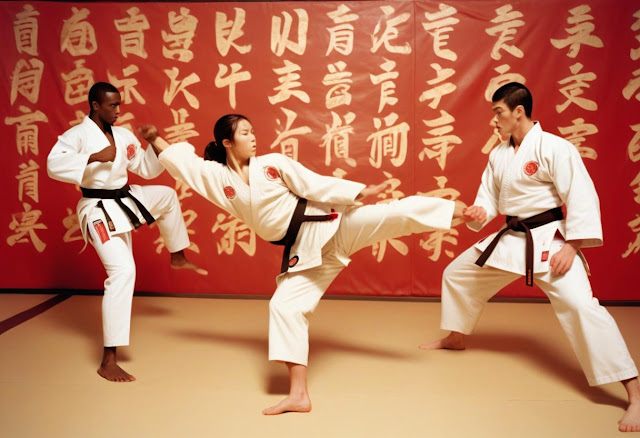Forbidden Martial Arts
Introduction
Martial arts are more than just methods of self-defense or entertainment; they are also an integral part of many cultures' heritage. While most martial arts are practiced legally and follow specific rules, there are some that are deemed too dangerous or inappropriate for general practice, leading to their prohibition in certain countries. In this article, we will explore forbidden martial arts, the reasons behind their prohibition, and their impact on society and practitioners. We will also delve into some specific and controversial martial arts systems.
History of Forbidden Martial Arts
Many martial arts trace their origins back centuries, where they were used for self-defense and combat in battles. Over time, these arts have evolved to include various techniques and systems, but some traditional martial arts are considered too dangerous for modern practice, resulting in their prohibition or restriction.
Examples of Forbidden Martial Arts
- Muay Thai
Muay Thai, or Thai boxing, is a traditional martial art from Thailand known for its use of strikes with the fists, feet, elbows, and knees. While it is a celebrated sport, some of its techniques, such as strikes to sensitive areas, are banned in certain regions due to the risk of severe injury.
- Capoeira
Capoeira is a Brazilian martial art that combines elements of dance, music, and combat. Although it is characterized by its fluid and acrobatic movements, some of its techniques are considered dangerous if not practiced properly, leading to restrictions on its practice in certain places.
- Traditional Kung Fu
Kung Fu is a Chinese martial art with a rich history and a wide variety of styles. Some traditional Kung Fu techniques are considered too dangerous or intense, leading to their prohibition in some regions.
- Aikido
Aikido is a Japanese martial art that emphasizes harmony and self-defense. However, some of its advanced techniques can be hazardous if not executed correctly, resulting in restrictions on its practice in certain areas.
Specific Forbidden Martial Arts
- Krav Maga
Krav Maga is an Israeli martial art developed for the Israeli military, focusing on practical self-defense and close combat techniques. Despite its effectiveness, some of its techniques are deemed too extreme or unsuitable for civilians, leading to restrictions in certain areas.
- Kuntao
Kuntao is a traditional martial art from Indonesia known for its diverse techniques combining strikes and grappling. Some of its methods are considered excessively dangerous or complex, resulting in limitations on its practice in various regions.
- Marine Corps Martial Arts Program (MCMAP)
MCMAP is a combat system used by the U.S. Marine Corps, integrating techniques from various martial arts such as Brazilian Jiu-Jitsu, boxing, and Kung Fu. While designed for military use, some of its techniques are viewed as too aggressive or unsuitable for civilian practice.
- Ninjutsu
Ninjutsu is an ancient Japanese martial art used by ninjas, encompassing techniques for stealth, combat, and weapons. Due to its focus on covert operations and potentially dangerous techniques, Ninjutsu is often restricted or requires specialized supervision.
- The Art of Violence and Tumbling
This martial art focuses on advanced techniques of tumbling and powerful strikes. Its practices, which push the limits of physical strength and agility, are considered too risky for general practice, leading to restrictions in some areas.
- Silat
Silat is a traditional martial art from Indonesia and Malaysia that includes close-combat techniques and weapons. Although effective in combat, some of Silat’s techniques are viewed as too hazardous or culturally specific, resulting in limitations on its practice in various regions.
Reasons for Prohibition
- Risk of Injury
Safety is a major concern driving the prohibition of certain martial arts. Techniques that can lead to severe injury or death, if not performed correctly, prompt authorities to ban or restrict their practice to protect individuals.
- Psychological Impact
Certain martial arts may include techniques that have adverse psychological effects on practitioners. Intense combat training can lead to issues such as anxiety or stress, contributing to decisions to prohibit these arts.
- Legal and Ethical Concerns
Some martial arts involve techniques that are considered unethical or illegal, such as torture or physical punishment. In these cases, prohibitions are put in place to safeguard individuals and align with local laws and ethical standards.
Impact of Prohibition on Society
- Enhancing Safety
Prohibiting certain martial arts helps enhance public safety by preventing injuries and health problems associated with risky techniques. This is part of broader efforts to improve community health and well-being.
- Encouraging Development of Alternative Arts
Prohibition can lead to the development of alternative martial arts that are safer and adhere to ethical standards. This can improve the overall quality of martial arts and ensure they are compatible with legal and moral principles.
- Psychological and Social Effects on Practitioners
Prohibition can affect practitioners emotionally and socially. Those who are passionate about certain martial arts may feel deprived of their preferred practice, which can impact their mental and social well-being.
Global Examples
Laws and regulations regarding forbidden martial arts vary from country to country. In some nations, strict laws apply, while others have more lenient approaches. For example, European countries may ban specific techniques due to safety concerns, while other regions might have more relaxed rules but emphasize proper regulation and training.
Conclusion
The prohibition of certain martial arts aims to protect individuals and communities from health and legal risks. While these bans can be controversial, they reflect efforts to ensure safety and uphold ethical values. It is important to approach martial arts with a focus on ethical and legal considerations to ensure the well-being of all involved.

Comments
Post a Comment